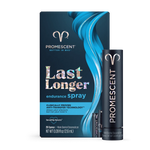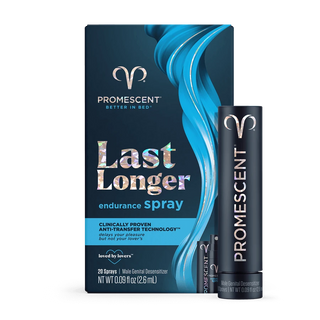Ejaculation is normally a pleasurable experience for most men. But some may experience painful ejaculation. Find out what causes it and how to treat it.


reviews


reviews

Painful ejaculation, also known as dysorgasmia, can be a distressing and uncomfortable experience. It can negatively impact relationships and cause men to experience low self-esteem.
The pain usually occurs after during or immediately after ejaculation. Given the intimate nature of the subject, it can be embarrassing for some men to discuss.
Some of the causes of painful ejaculation include prostatitis, urethritis, and seminal vesicle issues.
Treatment for painful ejaculation will depend on the cause of it. A few treatment options a doctor may suggest are physical therapy, antibiotics, and anti-inflammatory medications.
If the pain is persistent and severe during and after ejaculation, consult with a healthcare professional to avoid complications and improve sexual health.
Fortunately, the issue is treatable. Our comprehensive guide will provide a thorough understanding of the condition, its causes, symptoms, and effective treatment options.
Painful ejaculation occurs when an individual experiences pain or discomfort during or after ejaculation. This pain can be mild or severe. Some of the following areas the pain can be felt include:
Painful ejaculation can negatively impact one's sexual health, relationships, and overall quality of life.
Symptoms and Diagnosis
The primary symptom of painful ejaculation is pain or discomfort during or after ejaculation. Other symptoms that may occur are:
To diagnose the cause of painful ejaculation, a healthcare professional may conduct a physical examination and run some tests. If a more specialized evaluation is needed, you may be referred to a fertility specialist or urologist.
When we asked Dr. Jason Kovac, Reproductive Urologist from Posterity Health, about the causes of painful ejaculation, he stated, “Painful ejaculation itself can have various causes. The most common causes include:
Dr. Kovac also noted that in some cases, a combination of these factors may cause the condition. Here are a few more details on some of the most common causes.
Prostatitis is an inflammation of the prostate gland, which can cause pain during or after ejaculation. There are different types of prostatitis, including acute bacterial prostatitis, chronic bacterial prostatitis, and chronic pelvic pain syndrome.
While research has found that 1-10% of the general population suffered from painful ejaculation, for those with chronic prostatitis, it may be up to 30-75%.
Urethritis is an inflammation of the urethra, the tube that carries urine and semen out of the body. This condition can result in painful ejaculation, as well as discomfort during urination.
The seminal vesicles are responsible for producing semen. If there are any problems with this gland, such as hard deposits known as calculi, it may make ejaculation painful.
An obstruction in the ejaculatory ducts can cause painful ejaculation, as well as reduced semen volume and infertility. This condition may be congenital or acquired.
A variety of antidepressants have been reported as a potential cause of painful ejaculation. Some of those antidepressants include:
According to Dr. Kovac, “The first step in treating painful ejaculation is to properly diagnose the underlying cause(s). If the identified cause is related to physiological problems, treatment often involves medication and/or physical therapy. Additionally, patients are advised to review their lifestyle behaviors, avoid bad habits and foods that may aggravate symptoms, maintain a healthy diet, and exercise routine, as these are contributing factors to sexual health.”
He also noted that if painful ejaculation is related to psychological issues, patients should seek psychological therapy or counseling to help overcome those issues. Here’s a more detailed look on different treatment options for painful ejaculation.
For bacterial infections, such as prostatitis or seminal vesicle infections, antibiotics may be prescribed to clear the infection and alleviate symptoms.
Nonsteroidal anti-inflammatory drugs (NSAIDs) can be used to reduce inflammation and pain associated with conditions like prostatitis and urethritis.
These medications can help relax the muscles in the prostate and bladder neck, easing the flow of semen and reducing pain during ejaculation.
In some cases, surgical intervention may be necessary to address the underlying cause of painful ejaculation. For example, a transurethral resection of the ejaculatory ducts (TURED) may be performed to remove obstructions and restore normal ejaculation.
Pelvic floor physical therapy can help strengthen the muscles and alleviate pain associated with chronic pelvic pain syndrome, which is a common cause of painful ejaculation.
Implementing lifestyle changes, such as maintaining a healthy diet, exercising regularly, and managing stress, can help improve overall sexual health and may reduce the occurrence of painful ejaculation.
If antidepressants are the cause of painful ejaculation, reducing the dosage or changing the medication may help. Be sure to consult with your psychiatrist before making any changes.
Beyond these treatment options, other alternatives that can be considered include sex therapy and pain medication.
On whether painful ejaculation can be cured, Dr. Kovac stated, “Yes, absolutely. Painful ejaculation can often be effectively treated, depending on the underlying cause of the condition. However, it should be noted that while in some cases, painful ejaculation can be cured or significantly improved, in others, the primary goal may be symptom management.”
Dr. Kovac advises that, “Seeking early treatment for painful ejaculation is crucial to prevent potential complications and improve your quality of life.”
He further stated, “It is time to see a doctor if you experience blood in semen, painful or frequent urination, and/or if you have recurrent pain in the pelvic region, lower abdomen, testicles, or rectum during or after ejaculation.”
While it may not be possible to completely prevent painful ejaculation, there are steps you can take to minimize discomfort and improve your sexual health:
Painful ejaculation is a complex condition that can have a significant impact on a person's sexual health and well-being. Understanding the potential causes, recognizing the symptoms, and seeking appropriate treatment are critical steps in managing this condition.
As mentioned earlier, potential causes of painful ejaculation include prostatitis, urethritis, and seminal vesicle issues. Treatments that may help with painful ejaculation include antibiotics, anti-inflammatory medications, and alpha blockers.
By following the recommendations outlined in this comprehensive guide, individuals experiencing painful ejaculation can take proactive measures to improve their sexual health and overall quality of life.

Dr. Jason Kovac is a fellowship-trained Reproductive Urologist. He serves as the Regional Medical Director for Posterity Health in Indiana, Ohio, and Michigan. He is a dual board-certified Urologist in both the United States and Canada. Dr. Kovac obtained his MD and Ph.D. from the University of Western Ontario. He completed his urology residency at McMaster University in Hamilton, Ontario, and completed his Fellowship in Male Reproductive Medicine and Surgery at the Baylor College of Medicine in Houston, TX where he focused on male fertility and sexual medicine.
Absorption Pharmaceuticals LLC (Promescent) has strict informational citing guidelines and relies on peer-reviewed studies, academic or research institutions, medical associations, and medical experts. We attempt to use primary sources and refrain from using tertiary references and only citing trustworthy sources. Each article is reviewed, written, and updated by Medical Professionals or authoritative Experts in a specific, related field of practice. You can find out more about how we ensure our content is accurate and current by reading our editorial policy.
Parnham A, Serefoglu EC. Retrograde ejaculation, painful ejaculation and hematospermia. Transl Androl Urol. 2016 Aug;5(4):592-601. doi: 10.21037/tau.2016.06.05. PMID: 27652230; PMCID: PMC5002007. Accessed on May, 3, 2023.
"Urethritis - Penn Medicine." Pennmedicine.org, 2023, www.pennmedicine.org/for-patients-and-visitors/patient-information/conditions-treated-a-to-z/urethritis. Accessed on May, 3, 2023.
Waqar M, Omar K, Moubasher A, Brunckhorst O, Ahmed K. Painful Ejaculation - An Ignored Symptom. Cureus. 2020 Oct 30;12(10):e11253. doi: 10.7759/cureus.11253. PMID: 33269171; PMCID: PMC7707127. Accessed on May, 3, 2023.
Lira FT Neto, Bach PV, Miranda EP, Calisto SLDS, Silva GMTD, Antunes DL, Li PS. Management of Ejaculatory Duct Obstruction by Seminal Vesiculoscopy: Case Report and Literature Review. JBRA Assist Reprod. 2020 Mar 10;24(3):382-386. doi: 10.5935/1518-0557.20190075. Epub ahead of print. PMID: 32155038; PMCID: PMC7365543. Accessed on May, 3, 2023.
Demyttenaere K, Huygens R. Painful ejaculation and urinary hesitancy in association with antidepressant therapy: relief with tamsulosin. Eur Neuropsychopharmacol. 2002 Aug;12(4):337-41. doi: 10.1016/s0924-977x(02)00040-8. PMID: 12126873. Accessed on May, 3, 2023.
"Prostatitis: What It Is, How to Cure It - American Family Physician." Aafp.org, 2000, www.aafp.org/pubs/afp/issues/2000/0515/p3025.html. Accessed on May, 3, 2023.
"What Is the Treatment for Urethritis? - NURX." Nurx.com, 2023, www.nurx.com/faq/what-is-the-treatment-for-urethritis/. Accessed on May, 3, 2023.
"Alpha-1 Blocker - ScienceDirect." Sciencedirect.com, 2023, www.sciencedirect.com/topics/agricultural-and-biological-sciences/alpha-1-blocker. Accessed on May, 3, 2023.
"Painful Ejaculation - An Ignored Symptom - Cureus." Cureus.com, 2020, www.cureus.com/articles/43890-painful-ejaculation---an-ignored-symptom#!/. Accessed on May, 3, 2023.
Bradley MH, Rawlins A, Brinker CA. Physical Therapy Treatment of Pelvic Pain. Phys Med Rehabil Clin N Am. 2017 Aug;28(3):589-601. doi: 10.1016/j.pmr.2017.03.009. Epub 2017 May 12. PMID: 28676366. Accessed on May, 3, 2023.
"Your Trusted Male Fertility Clinic - Posterity Health" Posterityhealth.com, 2023, www.posterityhealth.com. Accessed on Aug, 1, 2023.

reviews
Your Cart Is Empty